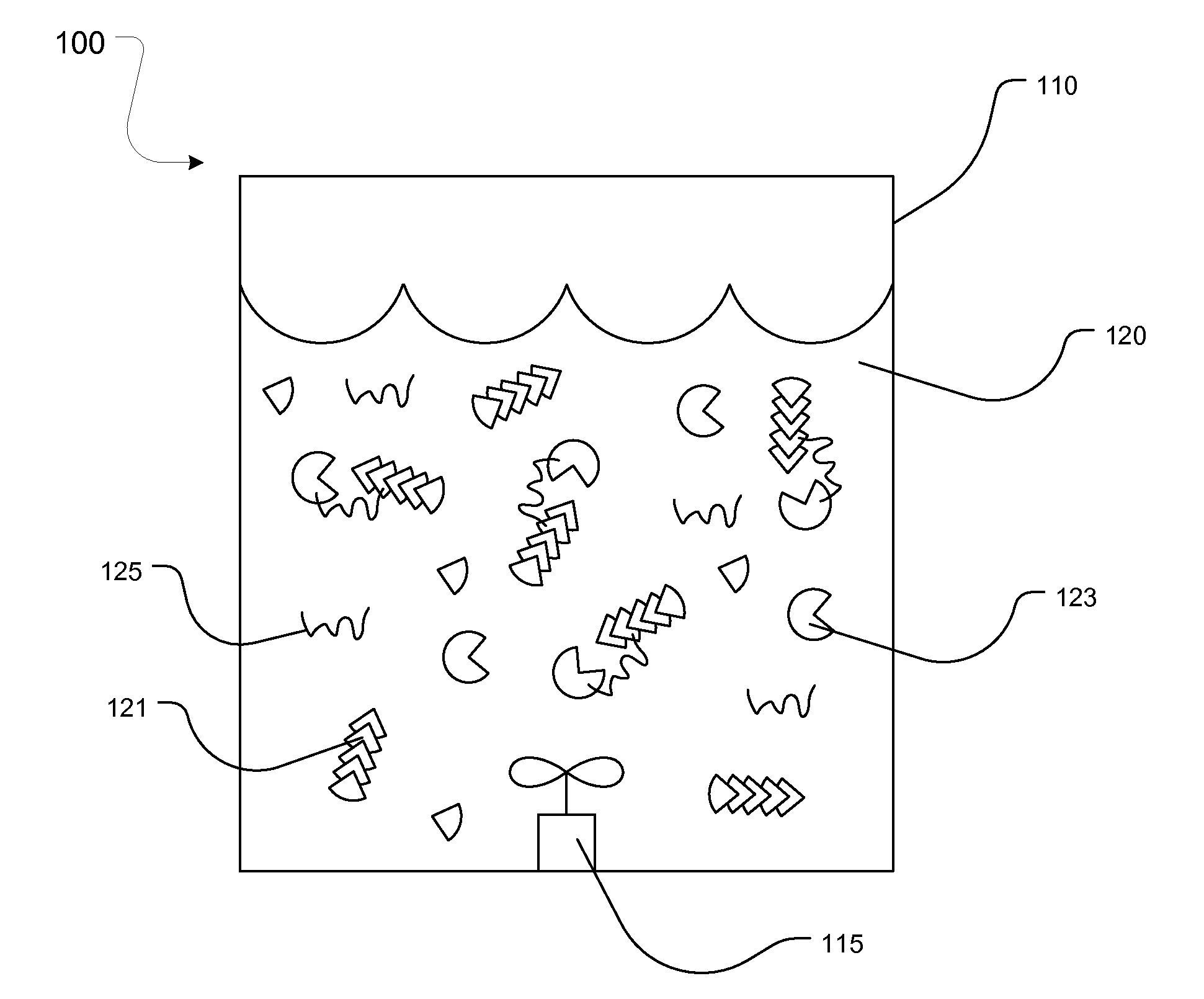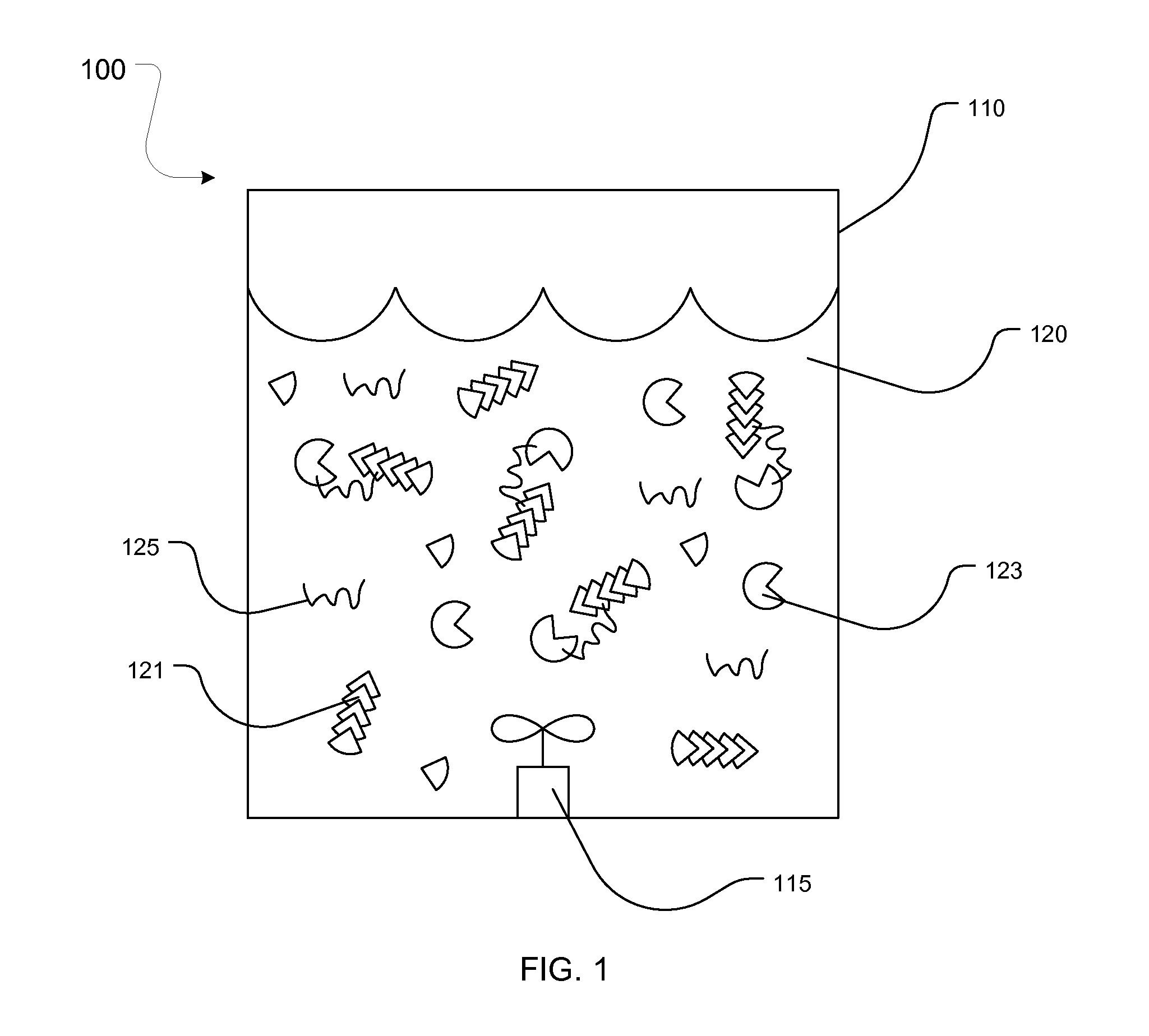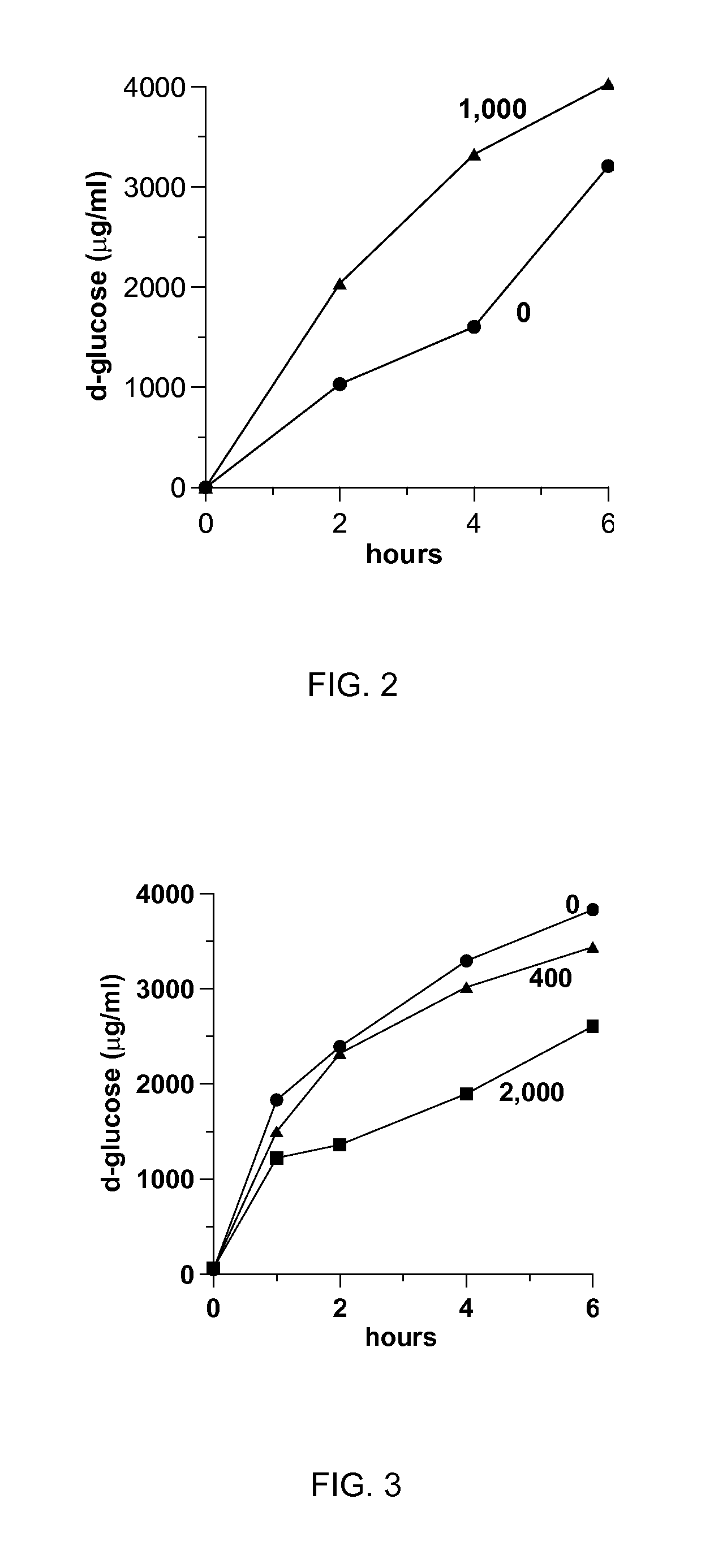Systems And Methods For Altering Rates Of Enzymatic Processes
a technology of enzymatic hydrolysis and rate, applied in the field of systems and methods for altering the rate of enzymatic hydrolysis of polysaccharides, can solve the problems of high cost of enzyme, a significant production cost of enzyme, and a frequently significant fraction of the cost of process or product. achieve the effect of enhancing the rate of catalysis
- Summary
- Abstract
- Description
- Claims
- Application Information
AI Technical Summary
Benefits of technology
Problems solved by technology
Method used
Image
Examples
example 1
Hydrolysis of Pulp Fiber in the Presence of a Cationic Polymer
[0072]In the present example, bleached kraft pulp fiber in a well-mixed 1% suspension by weight in water (pH=4.7) is hydrolyzed by a cellulase enzyme of a known type present at 1% concentration. The enzyme was a product from Novozymes Inc. and was identified as Pergalase. The generation of glucose from the enzymatic degradation of the pulp is illustrated in FIG. 2. The values for c-PAM in FIG. 2 are shown in ppm of water. When a similar degradation is conducted in the presence of a known type of linear cationic polyacrylamide (c-PAM) polymer (35% SH, Eka Chemicals) and provided at a concentration of 1,000 ppm, the rate of glucose production increased beyond the level achieved by the enzyme alone as shown in FIG. 2. This increase in rate is very beneficial inasmuch that it enables a more efficient use of the enzyme. The reaction rate acceleration, however, is not obtained for all c-PAMs. A cross-linked c-PAM (AF4380, Axch...
example 2
Hydrolysis of Starch in the Presence of a Cationic Polymer
[0077]The systems and methods of the present invention are also applicable to soluble substrates, such as unmodified grain starches, like corn starch, high amylose starch, wheat starch, and rice starch, potato starches such as potato starch and tapioca starch, and esterified, etherified, oxidized, acid treated, or dextrinated starch-substituted derivatives of these starches, among others. In the present example, 1% corn starch in water was reacted with a commercially available amylase enzyme preparation (Buzyme 2506, Buckman Laboratories) present at a 1% concentration. The rate of conversion of starch to glucose is accelerated in the presence of c-PAM (35% SH) with increasing c-PAM concentration up to 100 ppm, as illustrated in FIG. 7. A higher polymer of 1,000 ppm reduces the amount of glucose produced. Hence, the efficiency of the enzyme can be regulated by either increasing or decreasing the polymer dose.
[0078]Several mem...
example 3
Binding of Substrate to Enzyme by a Cationic Polymer
[0079]In order to demonstrate that c-PAM enhances the binding of cellulase enzyme to fiber, handsheets were exposed to the enzyme with and without the presence of c-PAM, and the degree of binding of the enzyme to the handsheet compared. Handsheets were used in place of a fiber suspension to remove the possibility of floc formation as the fibers were already formed into a sheet. A sample of softwood bleached kraft pulp was suspended in water and screened with a #28 mesh screen to remove fines and short fibers as described in TAPPI test Method T233 (TAPPI Press, Atlanta, Ga.). The fiber sample was then made into handsheets as described in TAPPI Test Method T-205. One set of handsheets was treated with a solution of a c-PAM (35% SH, Eka Chemicals prepared at 200 ppm) in water for 30 minutes in order to allow the c-PAM to be taken up by the fibers in the handsheet. An equivalent set of handsheets was exposed to a comparable volume of ...
PUM
| Property | Measurement | Unit |
|---|---|---|
| reaction temperature | aaaaa | aaaaa |
| temperature | aaaaa | aaaaa |
| temperature | aaaaa | aaaaa |
Abstract
Description
Claims
Application Information
 Login to View More
Login to View More - R&D
- Intellectual Property
- Life Sciences
- Materials
- Tech Scout
- Unparalleled Data Quality
- Higher Quality Content
- 60% Fewer Hallucinations
Browse by: Latest US Patents, China's latest patents, Technical Efficacy Thesaurus, Application Domain, Technology Topic, Popular Technical Reports.
© 2025 PatSnap. All rights reserved.Legal|Privacy policy|Modern Slavery Act Transparency Statement|Sitemap|About US| Contact US: help@patsnap.com



